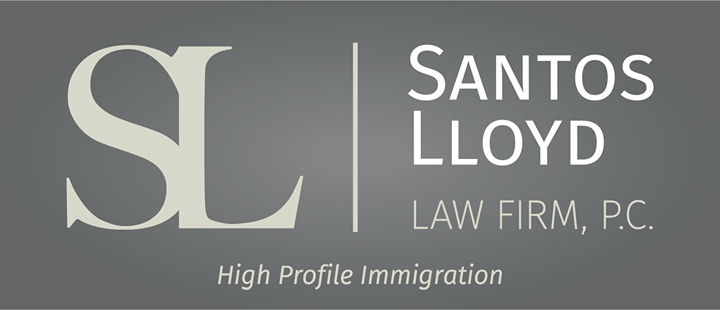Green Cards EB-2 e EB-3: O que Profissionais Corporativos Devem Saber
Shirin Navabi • June 26, 2025
Click here to read this article in English
Como escritório de advocacia especializado em imigração, auxiliamos regularmente profissionais altamente qualificados que trabalham nos Estados Unidos com vistos temporários de trabalho, como o H-1B, e que buscam um caminho para a residência permanente. Para muitos desses indivíduos, as categorias de green card baseadas em emprego EB-2 e EB-3 são as mais utilizadas — e frequentemente mal compreendidas. Embora ambas sejam vias viáveis para a residência permanente, elas diferem de maneiras significativas que podem impactar o tempo de processamento, a elegibilidade e a estratégia geral do seu caso.
A categoria EB-2 é voltada para indivíduos que possuem um diploma avançado ou que demonstram habilidade excepcional em sua área. A maioria dos candidatos se qualifica por ter um diploma de mestrado (ou superior) ou um diploma de bacharelado acompanhado de pelo menos cinco anos de experiência progressiva na profissão. Existe também uma subcategoria dentro do EB-2 chamada National Interest Waiver (NIW – Isenção por Interesse Nacional), que permite que indivíduos qualificados solicitem o green card sem o patrocínio de um empregador, caso seu trabalho traga benefícios substanciais para os Estados Unidos. Esse caminho é especialmente relevante para pesquisadores, empreendedores e profissionais em áreas de alto interesse nacional ou críticas para a missão do país.
Em contraste, a categoria EB-3 abrange profissionais com diploma de bacharelado, bem como trabalhadores qualificados com pelo menos dois anos de treinamento ou experiência. Embora o requisito educacional para o EB-3 pareça menos rigoroso, o processo é igualmente estruturado. Uma distinção importante entre EB-2 e EB-3 está nos requisitos da vaga de trabalho oferecida e não apenas nas qualificações do candidato. Por exemplo, se a vaga exigir apenas um diploma de bacharelado, mesmo um candidato altamente qualificado com mestrado pode ainda se enquadrar na categoria EB-3.
Independentemente da categoria, a maioria dos processos de green card baseados em emprego começa com a certificação trabalhista PERM. Este é um procedimento formal supervisionado pelo Departamento do Trabalho dos EUA, no qual o empregador deve testar o mercado de trabalho e demonstrar que não há trabalhadores americanos disponíveis, qualificados e dispostos a ocupar a vaga. O empregador também deve concordar em pagar o salário prevalente conforme determinado pelo Departamento do Trabalho. Esta etapa é obrigatória e altamente sensível a detalhes; imprecisões na descrição do cargo, nos passos de recrutamento ou na determinação salarial podem causar atrasos significativos ou até mesmo a negação do pedido.
Após a aprovação da certificação PERM, o empregador apresenta o Formulário I-140, a Petição de Imigrante para Trabalhador Estrangeiro. Essa petição confirma que o funcionário atende aos requisitos da vaga oferecida sob a categoria EB-2 ou EB-3, e que o empregador tem capacidade financeira para fornecer o cargo conforme descrito. Se a data de prioridade do funcionário — que é baseada na data em que o PERM foi protocolado — estiver atual de acordo com o Visa Bulletin do Departamento de Estado, o indivíduo poderá então apresentar o Formulário I-485
para ajustar seu status para residente permanente legal.
Um dos aspectos mais complexos desse processo envolve compreender como as datas de prioridade e os atrasos de vistos afetam o cronograma. Para candidatos de países com alta demanda, como Índia ou China, atrasos significativos são comuns — especialmente na categoria EB-2. Paradoxalmente, há momentos em que a categoria EB-3 avança mais rápido, levando alguns candidatos a protocolarem uma segunda petição I-140 sob o EB-3, mantendo a data de prioridade original. Essa estratégia pode ser eficaz, mas requer planejamento jurídico cuidadoso para ser executada corretamente.
Outro fator estratégico importante é a portabilidade. Se sua solicitação I-485 estiver pendente há pelo menos 180 dias e sua petição I-140 já tiver sido aprovada, você poderá ser elegível para mudar de empregador sob as disposições de portabilidade do AC21, desde que o novo cargo esteja na mesma ou em uma ocupação similar à anterior. Essa flexibilidade pode ser fundamental para profissionais que passam por mudanças de emprego ou promoções durante o longo processo de obtenção do green card.
Em última análise, a escolha entre EB-2 e EB-3 não diz respeito a prestígio, mas sim ao alinhamento entre suas qualificações, os requisitos da vaga e seu histórico imigratório, considerando os padrões legais atuais e as condições de mercado. A estratégia correta depende não apenas da sua formação e experiência, mas também dos seus objetivos profissionais de longo prazo e do seu país de origem.
No nosso escritório, trabalhamos lado a lado com empregadores e funcionários para desenvolver estratégias de imigração personalizadas que otimizem o processo e evitem contratempos desnecessários. Se você é um profissional corporativo avaliando suas opções de green card ou um empregador se preparando para patrocinar um membro-chave da equipe, oferecemos o conhecimento e a experiência necessários para conduzir seu caso com confiança.
Este blog não se destina a fornecer aconselhamento jurídico e nada aqui deve ser interpretado como estabelecimento de um relacionamento advogado-cliente. Por favor, agende uma consulta com um advogado de imigração antes de agir com base em qualquer informação lida aqui.

Once you have connected with a college program, have been admitted to the school, and deemed eligible to compete athletically, you will need to secure an F-1 student visa in order to actually attend your new college and begin your time as a student athlete. The first step in the visa process is to receive your Form I-2

For many talented athletes around the world, U.S. college athletics represent a remarkable opportunity to combine elite athletic competition with higher education. In sports such as basketball, soccer, track and field, and tennis, among others, hundreds of colleges and universities across the United States offer struct

Under the new regulation, if a person filed or files Form I-589, Application for Asylum and for Withholding of Removal after October 1, 2024, and the application remains pending with USCIS for 365 days, the applicant must pay an Annual Asylum Fee (AAF) on the one-year anniversary of his or her filing date.



